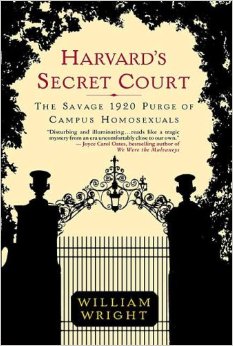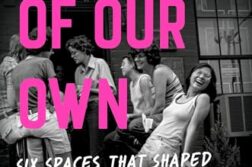Published in: January-February 2006 issue.
 Harvard’s Secret Court: The Savage 1920
Harvard’s Secret Court: The Savage 1920
Purge of Campus Homosexuals
by William Wright
St. Martin’s Press. 278 pages, $25.95
FEW PEOPLE alive today would be able to conceive of an American university purging its student ranks of “undesirables” along the lines of Stalin’s purges or Joe McCarthy’s witch hunts of the 1950’s. Students on most college campuses today (notwithstanding Oral Roberts or Baylor Universities) have the freedom to live their lives in relative safety without interference from Big Brother. Thus one would be surprised to learn what happened at America’s premier Ivy League institution, Harvard University, in 1920.







